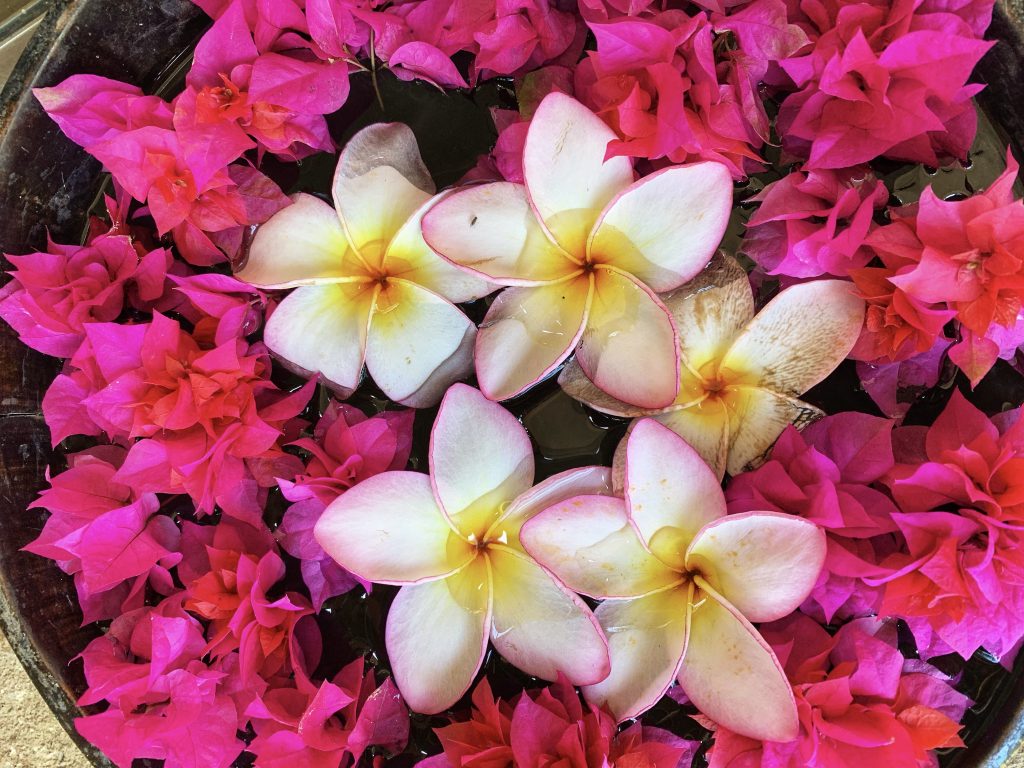
After a week of safaris, yoga, and a mishap with a monkey — plus a 4-day hike in Kenya before that ([read about it here]) — I flew east to Zanzibar for the last stretch of my trip. I had three days in Zanzibar, not nearly enough to see everything, but enough to get a feel for both sides of the island. The island sits just off the coast of mainland Tanzania, only about an hour’s flight from Arusha, but it couldn’t have felt more removed from the safari trails I’d just left behind. One day I was bouncing along dirt roads in the Serengeti ([that story here]); the next, I was stretched out under palm trees, staring at turquoise water.
Zanzibar is known both for its history and its beaches. Stone Town, the island’s old quarter, is a UNESCO site where winding alleys lead past carved wooden doors, markets, and crumbling palaces from the days of the spice trade — cloves, nutmeg, cinnamon, and pepper — which is why Zanzibar is known as the “Spice Island.” Out on the coast, the island is the picture you expect: long stretches of sand, traditional wooden dhows with their white triangular sails drifting across the horizon, and the warm, heavy air of the Indian Ocean.
I had three days here — just enough time for both sides: wandering Stone Town and slowing down by the sea.
My last morning in Arusha started with a big goodbye to our guide — the one who had been with me through every long drive and every game drive. He knew exactly where to stop for a view, how to spot lions half-hidden in the grass, and somehow kept us laughing even on the bumpiest days. Saying goodbye felt like closing the safari chapter ([read about that safari here]).
Arusha Airport was about as small as airports get — one short runway, a low building for check-in, and not much else. Instead of conveyor belts or baggage carts, a man in a bright orange vest hoisted my bag onto his shoulder and carried it across the lot to the plane. The planes here are small, so the rules were strict: only soft duffels under 15–20 kilos could be checked, with one small soft bag as carry-on. Hard-sided suitcases and roller bags didn’t stand a chance.
We lifted off over Arusha’s dusty patchwork of farms and hills, and before long the view turned to nothing but blue — the Indian Ocean stretching out forever, with reefs and sandbars visible even from the air. Landing in Zanzibar meant stepping into heavier air, palm trees, and the ocean waiting just down the road.
I stayed at Ocean Paradise Resort & Spa, right on the beach. The thatched-roof bungalows sat among palm trees and bougainvillea, with paths winding through the gardens down to the sand. My room was spacious but simple, with cool stone floors, dark wood furniture, and a canopy bed draped in mosquito netting. On arrival, the staff had decorated the bed with flowers — a small touch that made it feel welcoming after a long travel day. I loved this place already.
As nice as the room was, the real luxury here was the spa. Set in its own pavilion overlooking the gardens, it was something I made sure not to miss. After days of long drives and safari dust, a massage (or two) felt like a no-brainer — I was here to relax, after all. The treatments blended traditional techniques with local oils and scents.
That first evening, I walked down to the beach, watched the dhows drift across the horizon, and stayed until the sky turned pink and gold.
Instead of sightseeing, today was all about slowing down. Breakfast at the resort’s Ocean Restaurant was a huge buffet spread. I filled a plate with fresh fruit and pastries and enjoyed it with a delicious cup of coffee the waiter brought over. The coffee throughout Tanzania had been fantastic, and this was no exception. They also had a few items made to order — I went for a vegetable omelet.
Afterward, I changed into my bathing suit and found a lounge chair by the pool, where I spent the rest of the morning horizontal— my only accomplishment was turning the page of my book. As lunchtime approached, I ordered a piña colada — the kind of thing you just have to do on a lazy day. It was fabulous and quickly became my go-to cocktail while I was here. It set the tone: this was going to be a different kind of day.
Ocean Paradise really did live up to its name. Thatched-roof bungalows were scattered among palm trees and bougainvillea, connected by winding stone paths that led down to the beach. Inside the grounds, it felt like a bubble of calm.
The highlight of my day, as I kept leaning into relaxation, was the spa. My treatment began with a soak in a flower-filled tub, followed by something I’d never experienced before — the masseuse actually bathed me. It felt a little strange, though not unpleasant. From there it moved into a full-body massage, the kind that leaves you heavy-limbed and half-asleep. And because I was clearly all in, I went back later for a foot massage. By dinner, I felt like I’d melted into the place.
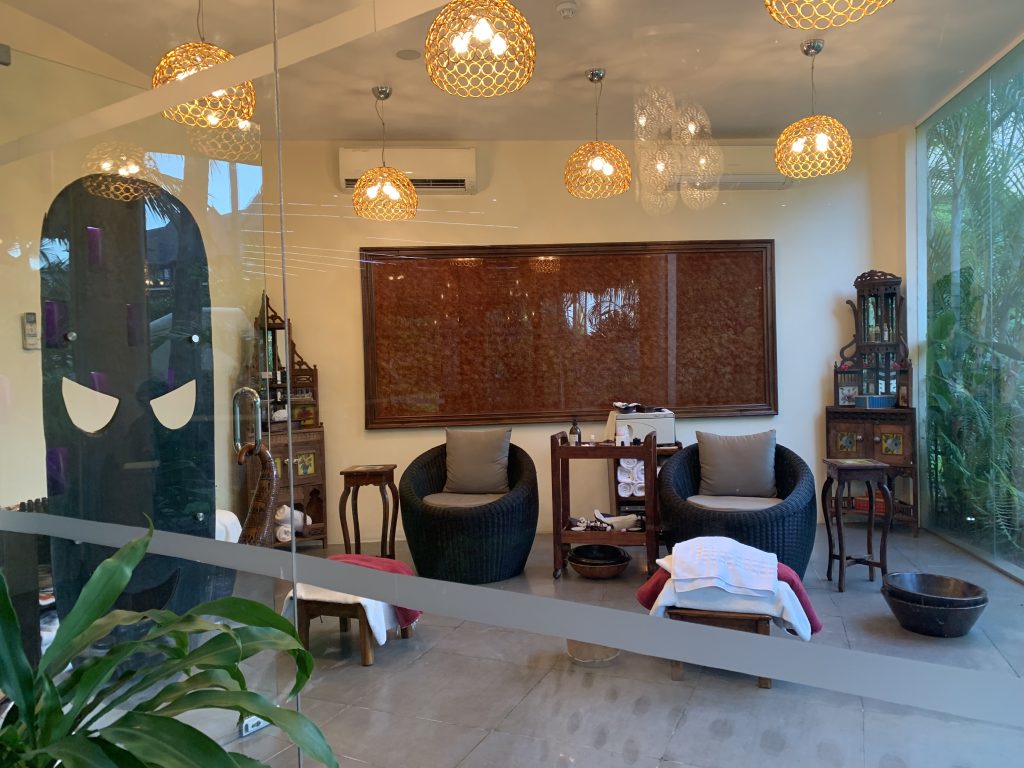
Outside the resort gates, the vibe was a bit different. Along the beach, tropical plants framed little makeshift shops where locals sold sarongs, wood carvings, and stacks of pineapples and bananas. A hand-painted sign for “Eddy Murphy Tours” leaned against a palm-frond hut — the kind of thing you’d never find inside the manicured walls.
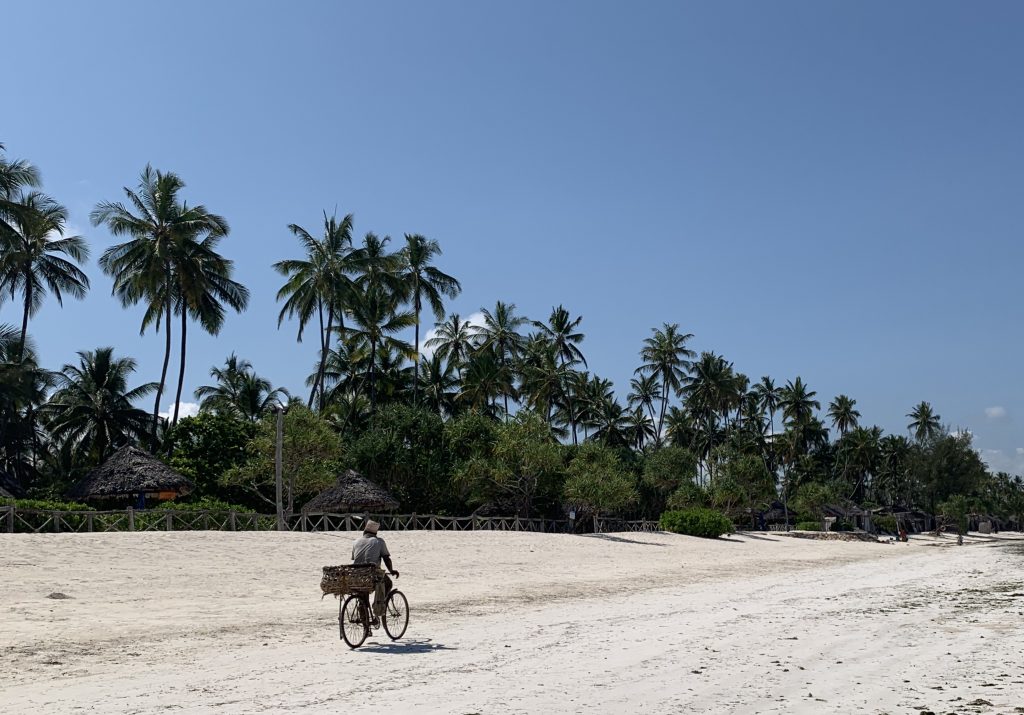
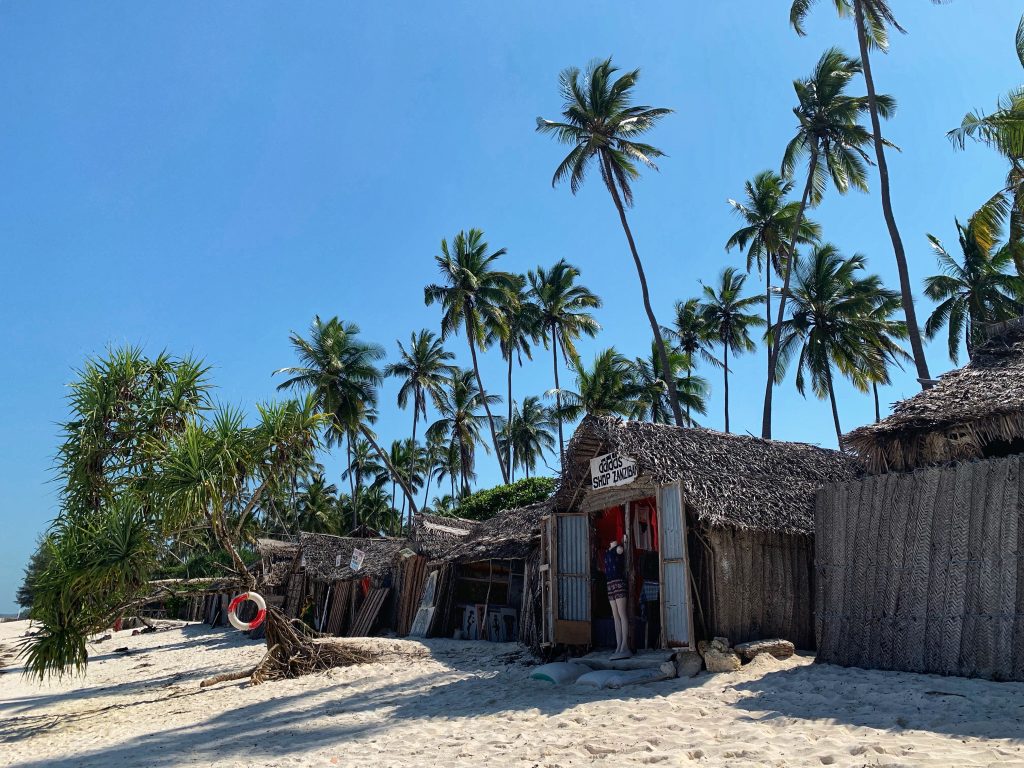
That evening, one of the nearby beach bars set up a big screen and showed Out of Africa. Sitting under the stars with the surf just beyond, it was the perfect way to close out a day of pure ease.
The next morning, after another fantastic breakfast, I joined a small group from the resort for a visit to the village just behind the line of hotels — I believe it was called Pwani Mchangani. Like my walk along the shoreline the day before, the contrast was striking. Houses were patched together with coral stone, sticks, and tin; laundry in bright colors stretched across yards; children in mismatched clothes ran to meet us, grabbing our hands or trailing behind—curious. You could tell they were used to tourists passing through — just the way they fell in step with us so easily.
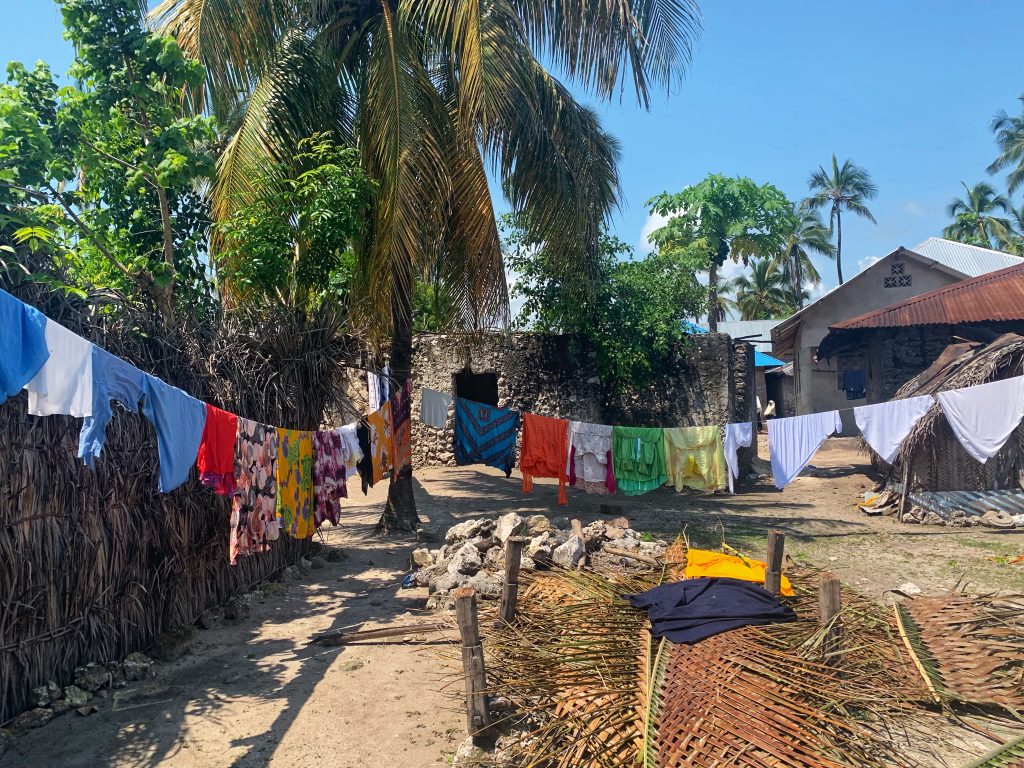
We stopped at the village mosque and school— removing our shoes before entering. Zanzibar is a predominantly Muslim Island, and it was clear here: inside the school, girls in white hijabs sat cross-legged on the floor with notebooks in their laps. We also passed visited a small clinic — simple, bare rooms that served as the community’s place for care.
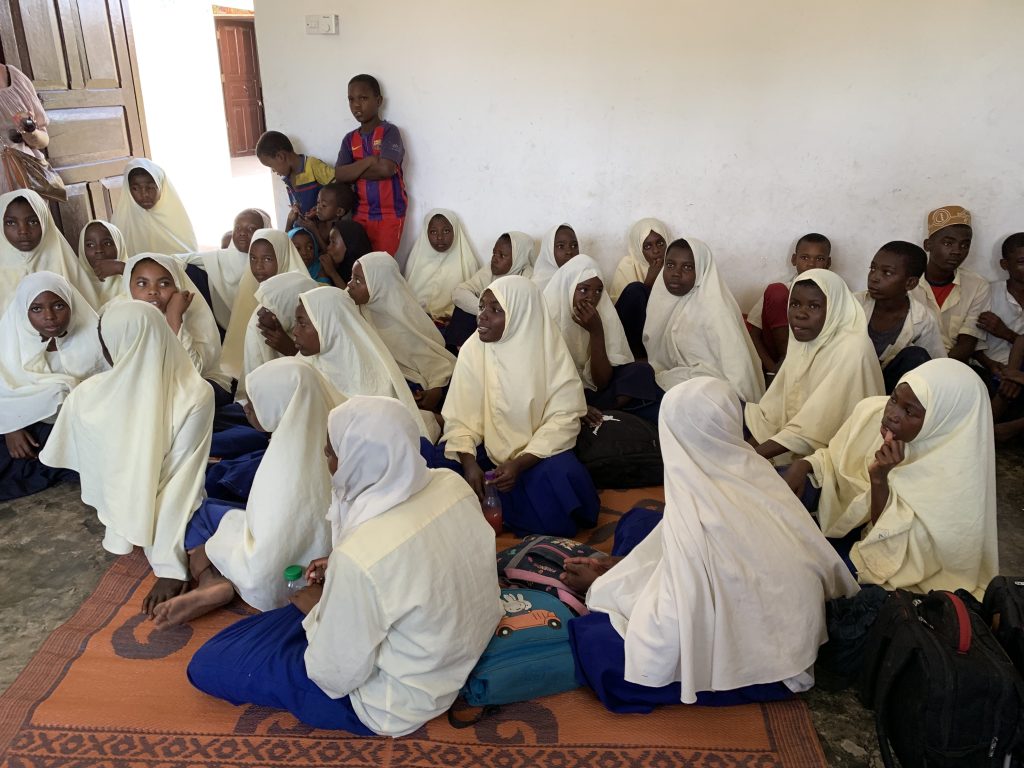
The whole experience was a reminder of the very different worlds that exist just steps apart.
In the afternoon I headed to Stone Town (about a 45-minute drive) — the old quarter of Zanzibar City, named for the coral stone used to build its houses and mosques. For centuries it was a hub of the spice trade and, more darkly, the East African slave trade. The alleys are narrow and crooked, the buildings weathered, with carved doors at street level and balconies above. Everywhere you turn there’s something to catch your eye — a flash of fabric, a brass-studded doorway, or a minaret above the rooftops.
I stopped first at the Old Fort, built by the Omani Arabs around 1700, its thick coral-stone walls partly made from the ruins of a Portuguese chapel. Later it was used as barracks and a prison, but today it doubles as a small museum and cultural venue. Nearby was the House of Wonders (Beit-el-Ajaib), once the grandest building on the island, built by Sultan Barghash in the late 1800s. It was the first in Zanzibar with electricity and an elevator — though during my visit it was wrapped in scaffolding.
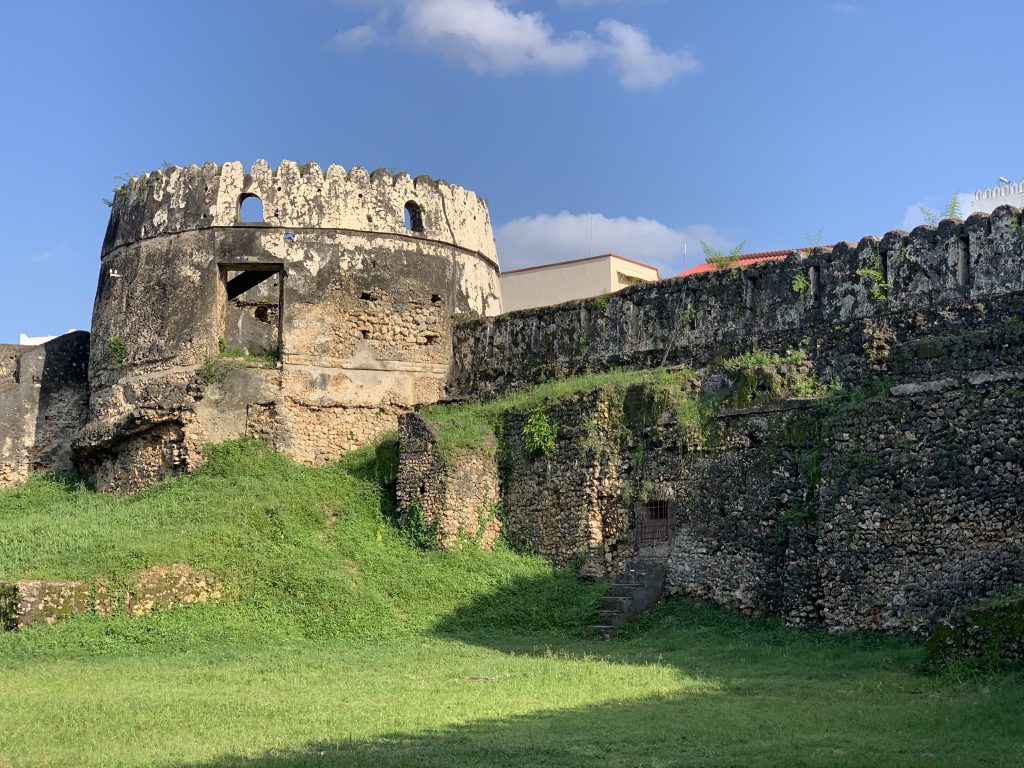
One of the more unexpected stops was the house where Freddie Mercury was born—now a museum. Before he was the lead singer of Queen, he spent his early years here as Farrokh Bulsara. Today the building is marked with photos of his life and career, a small shrine to a global icon who started in these narrow streets.
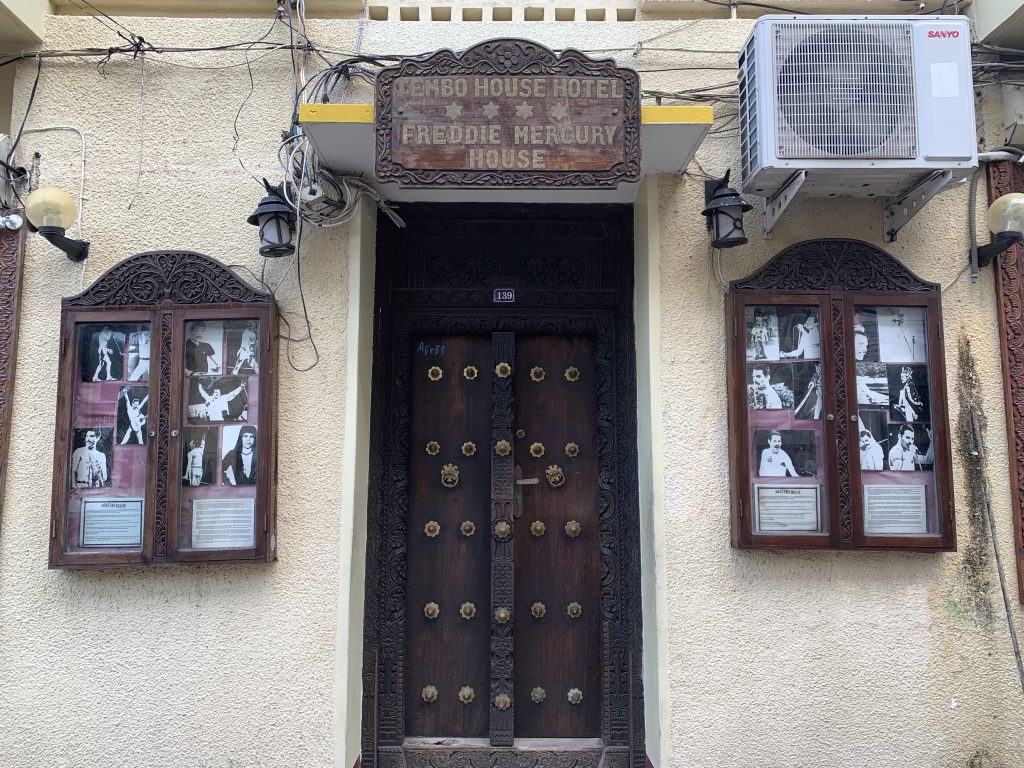
In between, I wandered through the shops — fabrics, spices, carvings piled high. A faded Girl Guides emblem painted on a wall caught my eye — basically the international version of the Girl Scouts — one of those small details that remind you how layered the place is. I snacked on grilled corn from a vendor, salty and smoky, and tried a cup of sugarcane juice that turned out far too sweet for me. At Darajani Bazaar, the main market, the stalls overflowed with everything from fish to spices. I couldn’t get over the sheer number of bananas in every size and shade of yellow.
Stone Town was crowded and hot, but it gave me a glimpse of Zanzibar beyond the resort walls — layered, imperfect, and real.
Dinner that night was grilled vegetables and coconut rice — simple, fresh, and perfect (okay and maybe another pina colada).
One more breakfast with an ocean view, and then it was time to leave. Three days in Zanzibar weren’t about doing everything — they were about catching my breath at the end of an already full trip. Between the sand, the sea, and an afternoon in Stone Town, it gave me the perfect ending.
I also never went hungry here — there was always something fresh and flavorful to eat, from fruit straight off the trees to grilled vegetables and simple curries. And I kept thinking back to my first night, when a beach bar set up a big screen and showed Out of Africa. The film is set in Kenya, where I’d just been hiking, and watching it here — under the stars, with the sound of the Indian Ocean behind me — felt like a full-circle East Africa moment.
Zanzibar gave me a little of everything: mornings by the beach, afternoons in Stone Town, and even a glimpse of village life just behind the resorts. Slower, softer, but still full of color and history — it was exactly what I needed.